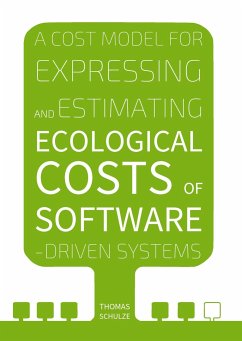The ecological footprint of our every day activities has become one of the greatest problems facing mankind today. Reducing the environmental footprint of IT, which has become a major contributor to green house gas emissions in the last decade, is therefore a major research challenge for both industry and academia. The focus of this book is to provide the foundation for expressing and estimating ecological costs of software systems in all life-cycle phases including the earliest phases of software development, thus helping all stakeholders make well-informed choices. In particular, common eco-cost drivers as well as new metrics are defined which allow meaningful and precise descriptions of ecological costs. Based on these concepts, auxiliary models are introduced which allow ecological costs and the circumstances causing them to be expressed in a unified, unambiguous, and easy-to-understand way. These models provide input to algorithmic eco-cost estimation models which show the impact of development decisions on ecological costs even in early phases of software development. Both the estimation and auxiliary models accommodate different input, allowing them to deliver the most accurate eco-cost estimates possible based on the information available. The approach presented in this book can therefore be used as the fulcrum of green software engineering methods to explore the eco-costs of applications' features and architectures at early stages in the development process before significant resources have been invested in their implementation. It therefore facilitates the creation of eco-friendlier software systems and by that contributing to the solution of one of the greatest problems facing mankind today.
Hinweis: Dieser Artikel kann nur an eine deutsche Lieferadresse ausgeliefert werden.
Hinweis: Dieser Artikel kann nur an eine deutsche Lieferadresse ausgeliefert werden.








